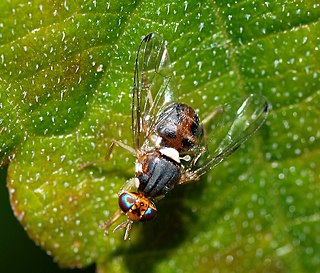
The olive fruit fly is a species of fruit fly, which belongs to the subfamily Dacinae. It is a phytophagous species, whose larvae feed on the fruit of olive trees, hence the common name. It is considered a serious pest in the cultivation of olives.

Elachista atricomella is a moth of the family Elachistidae that is found in Europe.

Prays fraxinella, the ash bud moth, is a moth of the family Plutellidae. It is found in Europe.

Eriocrania sangii, the large birch purple, is a moth of the family Eriocraniidae found in Europe and described by John Henry Wood in 1891. The moth can be found flying in sunshine around birch trees and the larvae feed on birch leaves.

Prochoreutis myllerana, Miller’s nettle-tap or small metal-mark, is a moth of the family Choreutidae found in Asia and Europe. Miller's nettle-tap was first described by Johan Christian Fabricius in 1794 from a specimen found in Sweden.

Coleophora niveicostella is a moth of the family Coleophoridae and was first described by Philipp Christoph Zeller in 1839. It is found from Sweden and Latvia to Spain, Italy and Greece and from Great Britain to Romania.

Elachista trapeziella is a moth of the family Elachistidae found in Europe.
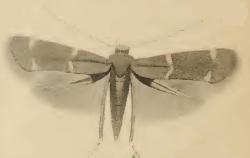
Elachista subnigrella is a moth of the family Elachistidae found in Europe.
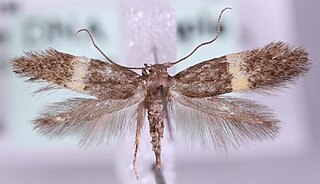
Elachista gangabella is a moth of the family Elachistidae. It is found in all of Europe, except the Iberian Peninsula.

Elachista cinereopunctella is a moth of the family Elachistidae found in Europe.
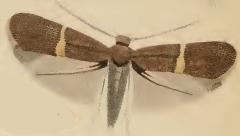
Elachista bisulcella is a moth of the family Elachistidae that is found in Europe.

Elachista bedellella is a moth of the family Elachistidae found in Europe.
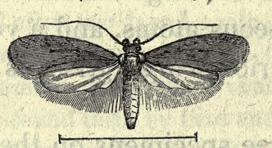
Agonopterix rotundella is a moth of the family Depressariidae and is found in most of Europe. It was first described from moths found in Surrey, England by the entomologist John Douglas in 1846.

Perittia obscurepunctella is a moth of the family Elachistidae found in Europe.
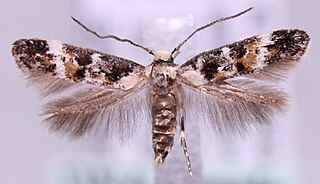
Mompha lacteella is a moth in the family Momphidae found in Asia and Europe.
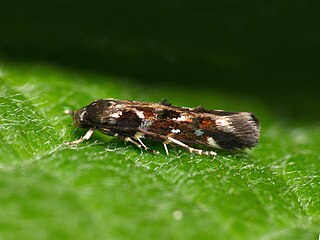
Mompha terminella is a moth in the family Momphidae found in Europe and North America.

Stephensia brunnichella is a moth of the family Elachistidae found in Europe and east into the Palearctic.

Digitivalva reticulella is a moth of the family Acrolepiidae found in most of Europe, except Ireland, Great Britain, the Netherlands, France, Portugal, Slovenia, much of the Balkan Peninsula, and Lithuania.
Epermenia insecurella, the chalk-hill lance-wing, is a moth of the family Epermeniidae. It is found in most of Europe, Asia Minor, the Near East and Mongolia.
Selania capparidana is a moth of the family Tortricidae. It was described by Philipp Christoph Zeller in 1847 and is found in Europe.



















